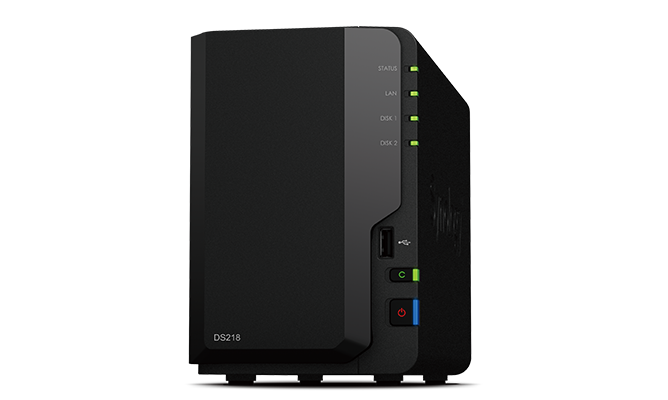
If you’re a serious home networker, you’ll know the advantage of network attached storage. For everyone else, this kind of storage (also known as NAS) is a powerful tool, giving you a central repository upon which to store your important documents, photos, media and backups, accessible from every computer attached to your home network. Synology have long been a name in this space, and with their newly announced DiskStation DS218 model, they’re hoping to increase that even further.
The DS218 is a 2-bay NAS equipped with a 64-bit quad-core processor delivering sequential throughput at over 112 MB/s reading and 112 MB/s writing. It comes with 2 GB DDR4 memory, four times the capacity of its predecessor. DS218 is also optimised for 10-bit 4K H.265 video transcoding via Video Station.
4K video content is becoming more and more common. DS218 is also optimised for 10-bit 4K H.265 video transcoding. If your device is not capable of 4K video playback, DS218 provides online 4K video transcoding to 1080p and below for a smoother experience.Michael Wang, Product Manager at Synology Inc.
The platform is powered by DiskStation Manager, an advanced and intuitive operating system for Synology NAS devices, with various applications offered to enhance work productivity. Synology has received numerous media accolades, topping the mid-range NAS category in TechTarget’s storage solution survey and winning PC Mag Readers’ Choice seven years in a row.
That’s some high praise, and so we’ve asked Synology to give us a DS218 to try out and see how it compares against our other hardware. It offers the usual range of NAS features, including:
- Web-based File Station for drag and drop file management.
- Network file access using FTP, AFP, NFS, SMB and WebDav to work with any environment.
- Cloud Station for network backups and sync
- QuickConnect to access your NAS across the Internet without needing to configure any special rules
- Built-in 4K Multimedia Server for streaming video content across your network and over the internet. It can transcode 4K H265 video in real-time.
It promises a lot, and I can’t wait to see how it delivers. We’ll report back in January with our review.




